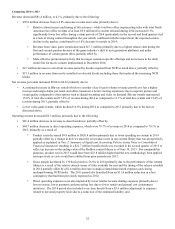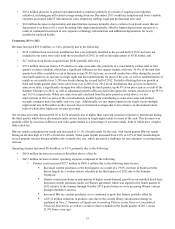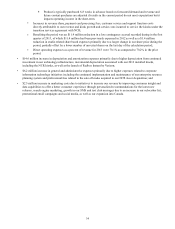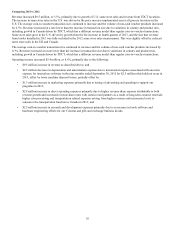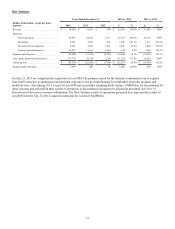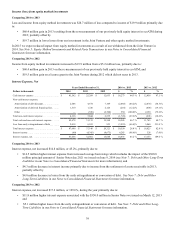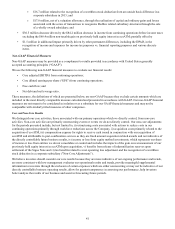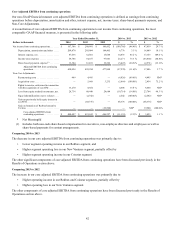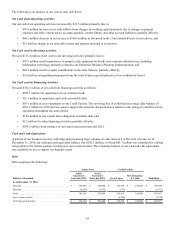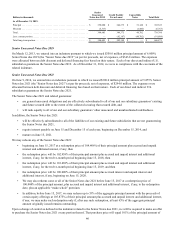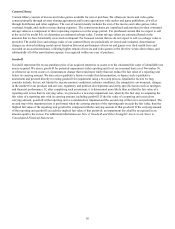Redbox 2014 Annual Report Download - page 49
Download and view the complete annual report
Please find page 49 of the 2014 Redbox annual report below. You can navigate through the pages in the report by either clicking on the pages listed below, or by using the keyword search tool below to find specific information within the annual report.
41
$16.7 million related to the recognition of a worthless stock deduction from an outside basis difference in a
corporate subsidiary in 2013; and
$17.8 million, net of a valuation allowance, through the realization of capital and ordinary gains and losses
associated with the series of transactions to reorganize Redbox related subsidiary structures through the sale
of a wholly owned subsidiary; and
• $30.5 million decrease driven by the $84.2 million decrease in income from continuing operations before income taxes
excluding the $68.4 million non-taxable gain on previously held equity interest in ecoATM; partially offset by
• $1.5 million in additional impact primarily driven by other permanent differences, including the DPAD, in the
recognition of income and expenses for income tax purposes vs. financial reporting purposes and various discrete
items.
Non-GAAP Financial Measures
Non-GAAP measures may be provided as a complement to results provided in accordance with United States generally
accepted accounting principles (“GAAP”).
We use the following non-GAAP financial measures to evaluate our financial results:
• Core adjusted EBITDA from continuing operations;
• Core diluted earnings per share (“EPS”) from continuing operations;
• Free cash flow; and
• Net debt and net leverage ratio.
These measures, the definitions of which are presented below, are non-GAAP because they exclude certain amounts which are
included in the most directly comparable measure calculated and presented in accordance with GAAP. Our non-GAAP financial
measures are not meant to be considered in isolation or as a substitute for our GAAP financial measures and may not be
comparable with similarly titled measures of other companies.
Core and Non-Core Results
We distinguish our core activities, those associated with our primary operations which we directly control, from non-core
activities. Non-core activities are primarily nonrecurring events or events we do not directly control. Our non-core adjustments
for the periods presented include, but not limited to, i) restructuring costs associated with actions to reduce costs in our
continuing operations primarily through workforce reductions across the Company, ii) acquisition costs primarily related to the
acquisition of ecoATM, iii) compensation expense for rights to receive cash issued in conjunction with our acquisition of
ecoATM and attributable to post-combination services as they are fixed amount acquisition related awards and not indicative of
the directly controllable future business results, iv) income or loss from equity method investments, which represents our share
of income or loss from entities we do not consolidate or control and includes the impacts of the gain on re-measurement of our
previously held equity interest in ecoATM upon acquisition, v) benefits from release of indemnification reserves upon
settlement of the Sigue Note and vi) tax benefits related to a net operating loss adjustment and the recognition of a worthless
stock deduction in a corporate subsidiary ("Non-Core Adjustments").
We believe investors should consider our core results because they are more indicative of our ongoing performance and trends,
are more consistent with how management evaluates our operational results and trends, provide meaningful supplemental
information to investors through the exclusion of certain expenses which are either nonrecurring or may not be indicative of our
directly controllable business operating results, allow for greater transparency in assessing our performance, help investors
better analyze the results of our business and assist in forecasting future periods.



